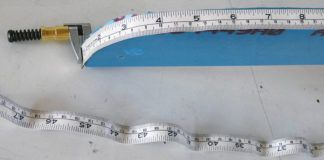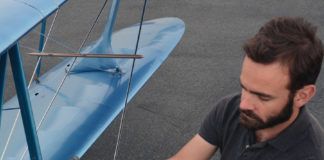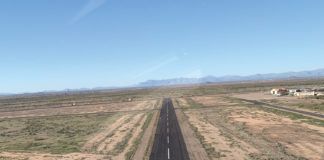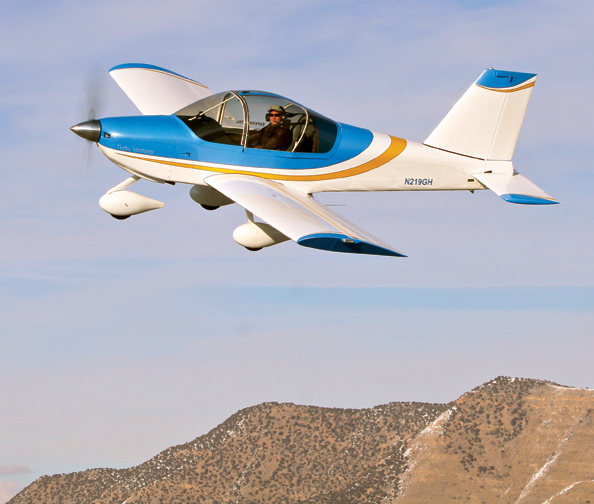
Randy Schlitter, the man behind RANS, is well-known as a designer and entrepreneur who feels, ah, unconfined by the rules. Which may partly explain the S-19’s popular name, the Venterra. It’s made up, like Venza or Xterra, to evoke an idea if not accurately define it. According to Schlitter, Venterra is combined from “vent” as a definition of wind and “terra” meaning the earth. As in, the wind over the earth. Nothing surprising from a resident of Hays, Kansas, now that you think about it.
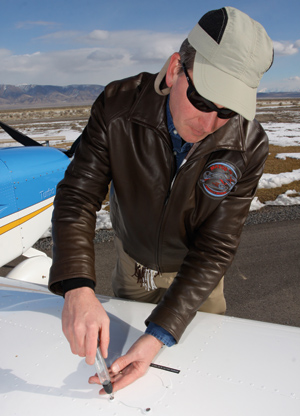
George Happ, of Matco Engineering fame, is a second-time builder with the S-19. He undertook a challenging engine program by opting for the Rotax 914.
In the same sense, Schlitter’s response to multi-time builder George Happ’s request to step up from the S-19’s normal powerplant follows the trend. In place of the enviable Rotax 912S, with 100 high-rpm horses, Happ wanted to fit the turbocharged, slightly higher stepping Rotax 914. He had done so on his RANS S-7S in part because the summertime temperatures in Salt Lake City cause the normally aspirated 912S to turn a tad asthmatic—especially on floats. The turbo would make all the difference. Besides, he says, “The 914 is a great engine.” Happ, naturally, wanted to repeat the effort in the S-19.
Schlitter’s response? Sure, why not?
You need to understand the normal reaction to such a query to appreciate why this one stands out. Most kit manufacturers have people manning the phones who recognize the sound of a project running off the rails, and calmly remind the builder that the design was built and tested with only a certain powerplant. Any deviations are officially discouraged. Some companies—Zenith comes to mind—won’t openly dissuade builders from trying new powerplants but carefully warn them about all the “nigglies” they are about to find, and remind all the would-be Smokey Yunicks that the best, fastest way to build is strictly by the book.
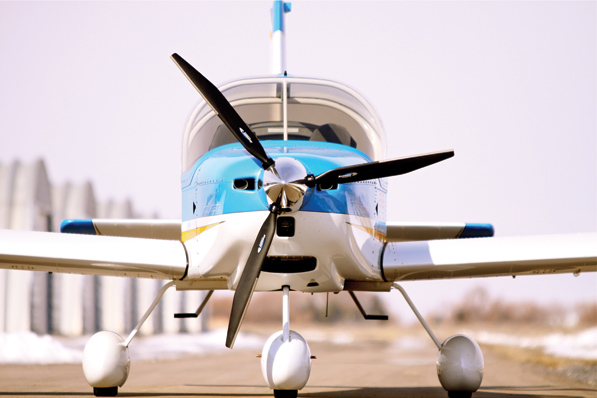
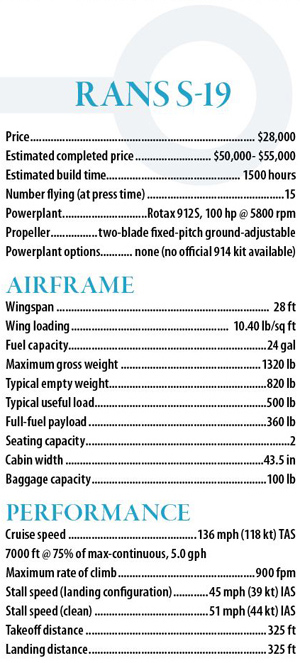
Specifications are manufacturer’s estimates and are based on the configuration of the demonstrator aircraft. Note: Because there are no official figures for the Rotax 914-powered version, these specifications reflect the standard 912S iteration.
Factory Assistance
Some builders forge ahead without factory support, but to Happ’s delight, Schlitter and his staff at RANS were more than forthcoming. “I think a big part of it,” says Happ, “is that Randy wanted to see what kind of performance we could get out of the 19. Plus he knew that I had a successful 914 installation in the S-7.”
Happ is a big fan of the 914 and its performance capabilities. “In a way, the engine drove the choice of the airframe,” he says. “I knew I wanted a faster airplane than the S-7, and I was familiar with the RANS products. But I also looked at the Van’s RV-12. At the time I was ready to build, the RV-12 was still early in development; in fact, I don’t think it was flying yet. When, later, I spoke to Van’s about the 914, they were not enthusiastic.” That would be a predictable response from the conservative folks in Aurora, Oregon. Van’s never recommends engines that it has not tested extensively, especially at a time in the design’s gestation where the default engine had not been fully debugged.
Another vote in favor of the S-19: Happ’s further requirements included low stall speed and benign handling, “because my daughter was going to learn to fly in it, and that eliminated some other models from consideration.
“RANS was very helpful giving me the little bits of information I needed to start planning the 914 installation even before the fuselage was ready. Remember, this was late 2005 and early 2006, and all that was out there was a tail kit for the 19,” says Happ. It would be tempting to think the 914 installation is eased by the fact that the core engine is the same size and weight as the 912S intended for the S-19. Um, not quite. “We worked really hard to find room for everything,” says Happ, explaining that components from the engine mount to the exhaust system, the induction system and the radiators would have to be different from the 912 firewall-forward.
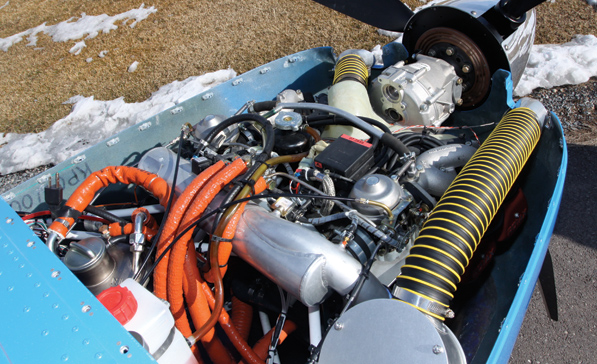
Somewhere under all this is an engine. The Rotax 914 shares its core components with the four-cylinder, geared 912, but calls for much more complicated induction and exhaust systems, as well as a more sophisticated fuel system. It’s still carbureted, though.
Early Adopter Blues
Generally speaking, Happ says being only the first builder outside the RANS facility wasn’t a huge burden. “We had a lot of communication with the factory. And they were really good about listening to what I and Mark Pringle [of Rocky Mountain Kitplanes, a builder-assist center near Salt Lake City] had to say. Probably the worst part was just waiting for components to get done and be shipped.”
Firewall-forward work continued. “We had the basic layout of how they did it with the 912, and I had the engine mount from the -7, basically the same tubing philosophy. And then we were fat city when we got the nosegear, which comes right through the mount. We had done a lot of work up to that point: Designing the mount, tack welding here at the shop, having it finish welded locally, and then we put it up on a forklift and hung weights from it to prove it was strong enough. Then we got it on the airplane and, bam, the nosegear was in the wrong place. So we moved a couple of tubes, and that cured the problem,” says Happ.
One down, how many more to go? “I had the benefit of working through some of the details on my S-7S,” says Happ. “The 914 is quite a bit different in key areas from the 912, like the exhaust and fuel systems. The fuel system requires a return line, so we planned for that building the fuselage and turned to Andair for a dual-spool valve.” The nature of the 914’s fuel-delivery system requires that the float bowls in the dual Bing carburetors are always above manifold pressure, or else fuel would come shooting out of the vents, at the same time starving the engine. As such, the 914 requires a differential fuel pressure sender, something that was created in a workaround with the TruTrak engineers so the company’s EFIS and engine monitor would function properly. “They [TruTrak] were really great about all the small modifications we needed,” says Happ.
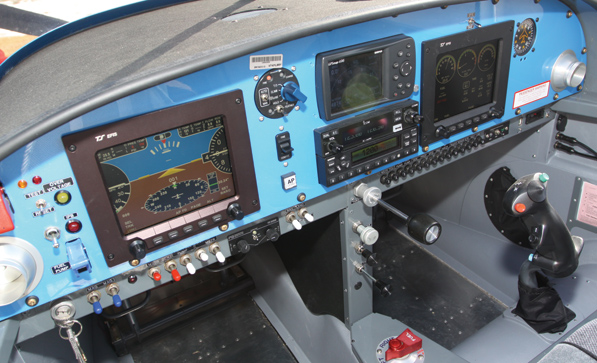
Happ chose dual TruTrak EFIS displays with an integrated two-axis autopilot and full engine monitoring. He appreciates the “dial-like” displays for airspeed and altitude.
“I had used the Rotax-supplied fuel pumps on the S-7, which are not rated to be on the firewall side. So we went to the Andair pumps, two of them, that can be on the hot side of the firewall. There’s nothing really difficult about any of this, but it takes time to sketch out where everything needs to go,” says Happ. And by the end of the process, with so much going on under the cowling, good design is critical for maintenance access as well as to prevent physical interference. While an outsider would view the 914 installation as a mass of hoses, closer examination discloses that it’s actually quite neatly done, with good access to all the usual maintenance items and adequate clearance.
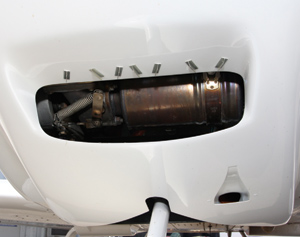
Vortex generators at the lower cowling inlet were an attempt to improve climb cooling. The standard S-19 installation has the coolant radiator directly behind this opening.
Cool It Down
By far the greatest challenge was cooling. “The cowling is the same as with the 912, so that was easy, but the rest of the system would have to be different. In the factory S-19, the radiator is up front, right behind the inlet. That won’t work in the 914 because the turbo and exhaust system are there. So we moved the radiator back against the firewall, using the same inlet up front,” explains Happ. After some trial and error in choosing and sizing a radiator, Happ and Pringle settled on a large single-row radiator. “We didn’t have a problem with the S-7 because we could fit a dual-row radiator, but that won’t fit in the S-19 installation,” says Happ.
One prominent item currently on the to-do list is to close the area around the radiator to improve flow through it. In the current form, the engine is happy on cooler days for takeoff and climb, but it can get hot during taxi operations. During hot weather, particularly in Salt Lake, where the high density altitude makes the non-intercooled turbo setup work harder than it would at sea level, takeoff and climb coolant temps can bump the redline.
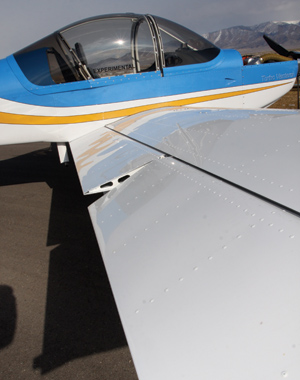
Randy Schlitter designed the S-19 with conventional controls—plain flaps and large, effective ailerons.
“I think we’re just a few small changes from getting it figured out,” says Happ, who is pondering a small heat exchanger that will combine coolant and oil lines in a common manifold so that the oil, which currently runs a bit on the cold side, can carry some of the load of the coolant, which is too hot. He is also working on shielding the engine and cooling system from infrared heat coming off the exhaust system and turbocharger. As they say in the development game, every little bit helps.
Trying It On
From the pilot’s perspective, there is not a lot more involved flying the 914-powered S-19 than in the conventional 912S-driven ship. Happ is using an Airmaster three-blade constant-speed prop—and that adds a minute amount of pilot workload. (The prop is electrically actuated and features a panel-mounted controller with presets for takeoff, climb and cruise settings as well as an option for manual control.) The way Happ flies it, he leaves the prop governed at takeoff for taxi out, and then manually sets the pitch to ensure the electric pitch-change motor is moving. At the end of the runup, he switches back to governed/takeoff mode to see that the controller is operative.
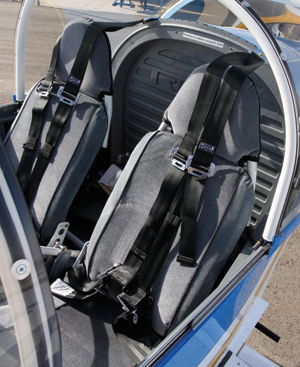
The RANS-supplied seats incorporate energy-absorbing design. Happ has fitted the optional headrests and Hooker fixed harnesses to them.
On takeoff, the turbo 914 is nearly as simple to manage as the 912. Because of the electronic wastegate, the throttle responds smoothly, and the manifold pressure comes up smartly to 39 inches; it’s very stable once you cease moving the throttle. Takeoff is actually considered 115% power (115 horsepower) at 5800 rpm by Rotax, and the standard procedure is to reduce to 100% power for the climb. That would be 36 inches and 5500 rpm. A slight movement of the throttle and a flick of the Airmaster’s controller and you’re there. On our flight, the manifold pressure showed no tendency to hunt or overshoot the throttle setting. In this respect, the Rotax is better behaved than many conventional turbocharged aircraft engines.
Offsetting the 4200-foot field elevation at Skypark Airport north of Salt Lake City was the near-freezing ambient temperature on the day of our flight. As such, the turbo S-19 was more than sprightly. At the climb power setting, we ascended at better than 800 fpm (in less-than-smooth air) at 90 to 100 mph indicated; speeds well above best-rate and best-angle ideals. But the view over the nose was worth the flatter climb, and the engine was perfectly happy, burning 9 gph in the climb. CHTs were 227° and 237° F.
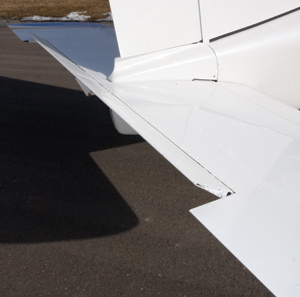
The S-19’s stabilator uses an anti-servo tab that moves more rapidly than the main surface to improve stability.
Clear of the traffic area, we transitioned to a 75%-power climb at 31 inches of manifold pressure and 5000 rpm—the rate sagged to only 700 fpm at the same airspeed as before, on a more modest 6.5 gph. Happ follows the recommended procedure of running the second electric fuel pump during takeoff and climb, and also keeps the Olson Technologies battery backup system armed for all flights. “It’s an electric airplane,” says Happ. “Lose electrical and you lose the fuel supply, and the wastegate stops working, though it does lock down in place. But after that, you’re running a fixed wastegate.”
Happ’s primary reasons for installing the 914 instead of the 912S include good high-density-altitude performance from his Utah base and improved cruise speeds at altitude. Generally speaking, when comparing two like airframes—one turbocharged and one not—the normally aspirated version holds a slight advantage at lower altitude. This counterintuitive result stems from the inevitable compromises in cooling and the increased cooling drag typical of turbocharged installations. It’s also the upshot of the turbocharger compressing and heating the induction air—both energy density (for a given manifold pressure) and detonation margins are affected. So it’s common with two equally powered aircraft for the non-turbo version to be faster at and below the critical altitude. (In this case, the highest altitude at which a given amount of power can be produced.)
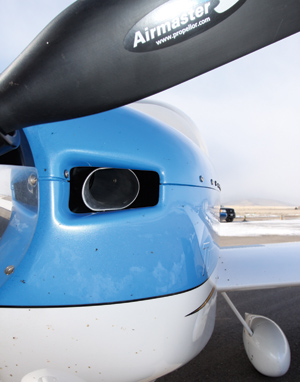
Internal ducts supply air to the cylinder barrels (through a fiberglass manifold) and, on the other inlet, to the air filter.
RANS predicts a 136-mph (118-knot) cruise with the 912S at optimum altitude. On our first run, Happ’s machine legged out a 141-mph cruise at 7000 feet MSL (and just under that for density altitude, as it was pretty cold) on 6 gph. There is one of the compromises—the 912S at 75% power is about 1 gph thriftier. Another speed run the next day, with virtually identical atmospheric conditions, revealed 142 mph true airspeed at 7500 feet.
Happ, revealing the engineer that he is, has carefully documented speeds with altitude up to 15,500 feet MSL. His data show cruise speeds at 75% power that range from 139 mph true at 6600 feet MSL up to 146 mph TAS at 12,500 feet. With the current installation, manifold pressure began to decline above that altitude, so at 14,500 feet the power setting was 70% but TAS climbed to 152 mph. Fuel flow ranged from 5.8 gph at 7500 feet to 6.8 at 14,500. At 15,500 feet MSL, Happ recorded a TAS of 144 mph at 55% power and 6.3 gph. His goal is to further improve cooling so that higher power settings are available at altitude. His dream is 160 mph true at 16,000 feet.
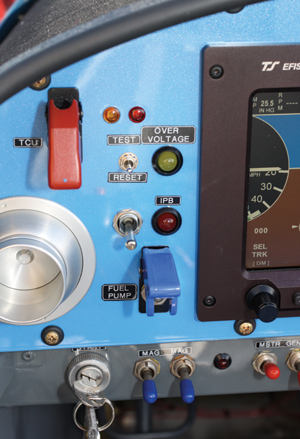
Mission control: The switch under the red guard turns off the electronic turbo wastegate controller in the event of a runaway; the switch under the blue guard turns off the primary fuel pump, which is normally on anytime the airplane is powered up.
Quick to point out the benefits of flying at altitude, Happ is not quite but almost dismissive of big speed gains. “You have so many more options at altitude,” he says, “and you can usually find an altitude where it’s cool in the summer and not as bumpy as down low. The S-19 does not have high wing loading, so it does respond to turbulence like a lightweight airplane. The turbo helps a lot.” What’s more, turbocharged ponies maintain their strength in the climb, so the airplane is eager to get to altitude—even in over-powered non-turbo airplanes, the slog to altitude can make being there not worth the getting there.
Handling Alterations
Happ’s S-19 is heavier than most because of that 914 up front, of course. Empty weight clocks in at 900 pounds, so he elected to license the maximum-gross at 1450 pounds. RANS has tested to 1475 pounds, which gives Happ the confidence to set the weight there; naturally, this takes his S-19 out of LSA legality, but that doesn’t concern him. “I didn’t want to sacrifice the useful load for LSA,” he says.
All S-19s carry 24 gallons of fuel (unleaded autogas preferred, up to 10% ethanol content allowed) in plastic, slip-in wing tanks. With them full, Happ’s airplane can still carry 410 pounds in the cabin and generous baggage area behind the seats.
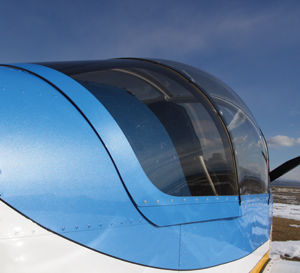
In most flight regimes, Happ’s S-19 is a sweetheart. Notable is the wet-dog shake preceding the stall by a good 10 mph, especially in the full-flaps configuration. If you somehow miss the aggressive warning buffet—and it really is eye-opening, far more pronounced than many, even most, certified aircraft—then the airplane will simply bob its nose and sink aggressively in a wings-level stall. I provoked the airplane in a steep turn and the accelerated stall is just as benign.
Control forces are light and the surfaces powerful. RANS has chosen conventional aileron and rudder surfaces, operated through pushrods and cables, respectively. The horizontal tail surface is an all-flying “stabilator” familiar to RV-12 and Cherokee pilots, among others. In the last S-19 I flew, the factory’s ship, the stabilator provided predictable pitch control, with reasonable (if on the light end of reasonable) stick force per G and low but discernible force feedback as you pull away from trimmed airspeed. Like most stabilators, the S-19’s uses an anti-servo tab that is repositioned internally to act as a pitch-trim tab. The anti-servo action helps reduce the surface’s responsiveness.
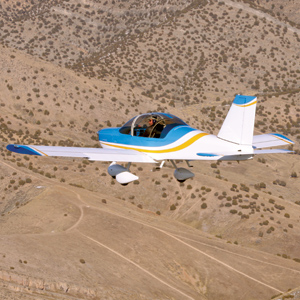
Happ’s airplane has a quirk. He was concerned about adding control friction with the two-axis TruTrak autopilot servos, so he omitted the stabilizer down spring that is normally installed. (He also says the factory was neutral on the installation of the spring—it was OK if he left it off.) In some cases, lack of a down spring in a system designed for it causes vagueness and very low pitch-correction forces near the trim point. And that’s exactly what Happ’s airplane displays. In fact, I managed to get into a modest but persistent pilot-induced oscillation (PIO) on one of my landings simply because there was no force feedback. At that point, maintaining a desired pitch attitude becomes considerably more difficult, especially in the dynamic landing phase, where the forces are constantly changing anyway from reduction in airspeed and ground effect. Happ is thinking about installing the spring, and because the factory’s airplane did not display this behavior—and because the heavier 914 ought to bring the empty center of gravity forward, which is good for pitch stability—I’ll mark this down as a one-off limited to this particular airplane.
A Nice Package
Beyond that one eyebrow raiser, there is much to like about the S-19. Happ and I fit comfortably in the cabin despite being bundled up like Iditarod participants. There are drafts to be fixed in his S-19 that the cabin heater couldn’t hope to overcome. Ample legroom meets an almost ridiculous amount of headroom that combines with a high-ish seating position to provide a true aerial panorama. Tall pilots like Happ appear about right from outside the airplane; shorties look like Weebles.
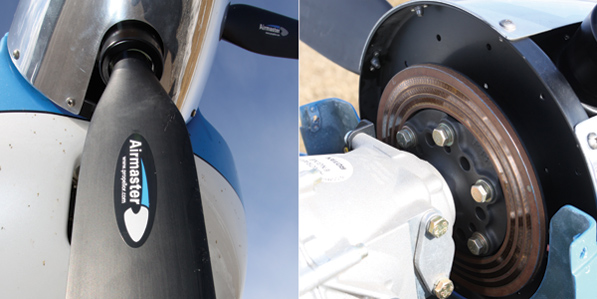
Airmaster’s three-blade, constant-speed propeller uses either Warp Drive or Sensenich blades (left). Pitch change comes from an electric motor in the hub whose power comes through slip rings surrounding the propeller flange (right).
A fully optioned S-19 kit taps out at $33,727 before you add engine, paint and avionics; but it does include an interior, seats, canopy, fixed-pitch propeller and firewall-forward mounting components. Where the 912S hovers near $20,000, the 914 is $12,000 more. To that you can add the cost of a custom engine mount, radiators, extra fuel pumps and all the assorted hardware required to get the 914 to work. This project wouldn’t leave much change from your $90,000 bill. But to put that into perspective, RANS now offers a ready-to-fly S-19, called the S-19LS, at a base price of $135,000 with the 912S.
Rather than ask him if he’d do it again, it’s better to know: Are you happy? “Absolutely, yes,” Happ says. “The performance of the 914 is what I wanted, and there is probably more to come as we continue to refine it. RANS has been great to work with, and the kit is very good—even mine, which was the first customer kit delivered.” A delighted man with a quick, handsome airplane. We’ll give that a thumbs-up.
For more information, call 785/625-6346 or visit www.rans.com.

